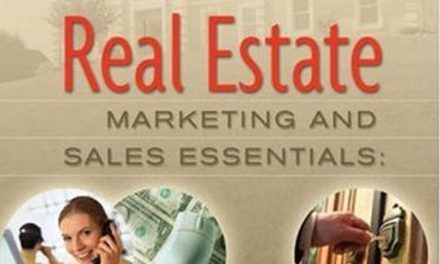The juiciest carrot that dangles from the stick of homeownership has long been the promise of a generous mortgage interest tax deduction (MID). However, with legislators currently scouring the nation’s fiscal landscape for ways to cut the national deficit, the tantalizing tax benefit of homeownership is under attack once again.
Rather than doing away with the tax benefit altogether, which would essentially be political suicide for any legislator involved, the National Commission on Fiscal Responsibility and Reform is considering a more conservative version of the tax deduction. Under the revised plan, MIDs would only be eliminated on second homes, mortgages of more than $500,000 and home-equity loans.
Opponents of reforming the sacrosanct tax deduction are many. With the housing market still floundering in the doldrums of the sluggish economic recovery, concerns of stunting what little growth the housing market is experiencing abound. If the keystone incentive for homeownership is abolished or scaled back, many fuss that new homebuyer demand will diminish and home prices could fall precipitously as much of the value of a home comes from the tax benefits it provides as price support.
While the political implications of a MID reform are vexed, some restructuring of the benefit makes economic sense. Although the deduction effectively promotes homeownership, it does so to an extreme. Homebuyers are encouraged to take on more mortgage debt and buy more of a home than they need, since they may offset the overall cost of their home with the money they believe they are saving with the tax deduction.
In the final sum, however, the tax deduction may not actually save the homeowner any money — economists argue it simply contributes to higher property prices that effectively render the tax deduction moot.
Also, economists maintain the tax deduction is regressive in nature and stands as a viable candidate for repeal in order to mitigate the national deficit. Politicians, especially those of the supply-side variety, consider the MID an indispensible tool for promoting home ownership and driving the real estate construction market.
But which approach to the tax deduction reform will best serve the California real estate market?
first tuesday take: The recent brouhaha over reforming the MID is yet another example of a political stalemate stalling the application of reason in real estate market analysis. Illusory issues of fairness and a deeply ingrained sense of entitlement amongst the home buying public has evolved out of the persistent political rhetoric that homeownership is an inalienable right and a moral necessity for all Americans. It is not.
As a result of this ideological inculcation, the economy has come to depend on easily acquired mortgage loans and thus the satisfaction of the collective desire for homeownership. Since the MID was used to make the American dream even more attractive (and obtainable), any logical attempt to repeal or reform it will always be met with fervent emotional outcry.
However, intervention is sorely needed to diminish the national debt, and the only option for doing so is either instituting new taxes (a greater no-no) or reforming outdated tax breaks, such as the MID. The MID is a prime candidate for this purpose since it is effectively an illusion, designed to artificially stimulate market activity but offering no real benefit to homebuyers.
Should the tax deduction be reformed or repealed, home prices will indeed fall slightly, reflecting the magic the tax deduction works on home prices. Make no mistake, any offset a tax deduction may afford a homeowner is reflected in an equal amount of price inflation – the two opposing sides of the scale must necessarily balance. The deduction exists in appearance only, filling tax returns with additional deductions but affecting bank accounts little.
The recovery period after a recession is a time to come to our senses and shake-off outdated and ineffective policy in order to render our markets leaner and more efficient. A repeal or reform of the MID will even the playing field of homeownership and residential rental properties, and serve to alleviate the many inequalities that exist in the real estate market today. Call the subsidy what it is: government interference with homeownerships. [For an extensive analysis of the effect of the MID on the real estate market, see the March 2010 first tuesday article, Getting rid of housing subsidies: the mortgage interest deduction.]
Taxes exist so that government can raise revenue in order for the nation to function (in the current economic period, to balance the national debt), not as an artificial stimulus used to promote already mature markets such as home construction, multiple listing service (MLS) single family residence (SFR) sales and mortgage lending.
To date, the U.S. is the only industrialized nation that uses tax subsidies to promote homeownership. We once shared this venerable distinction with Great Britain, who has since phased their homeownership tax subsidies out over a 12-year period, only to see homeownership rates rise.
In order for the U.S. to remain competitive in the global marketplace, we must wean ourselves off of the outdated ideologies we so heavily depended on as a fledgling nation.
However, since politicians and bureaucrats will always exploit the logical issues of homeownership promoted as a “dream” in order to manipulate the emotions of homebuyers (read: voters), it is up to our well-trained real estate agents and brokers to inform the public of the realities of homeownership.
As gatekeepers to California’s real estate, brokers and agents have the power to educate homebuyers and thus create a buying public that is driven by sound fiscal reasoning rather than the fleeting satisfaction of emotion — an issue that contributed to the real estate market implosion in the first place.
MID reform will not cause the sky to fall — it will clear the air so that we may see the horizon for what it truly is: a new paradigm that rewards innovation, transparency and sustainable real estate decisions. Most were eliminated in 1986 to the benefit of a rising market. [For more information on the role of agents and brokers in the post-Boom California real estate market, see the May 2010 first tuesday article, Looking through the window towards recovery: a real estate paradigm shift – Part I and Part II.]
Re: “With mortgage deduction on chopping block, experts protest” from the Sacramento Bee














The problem with this issue (MID reform) and any other issue related to solving the debt problem is the complete failure to establish a rational context in which this discussion should take place. The outcome of any reform will be unjustified if it fails to begin with an assessment of the current state of “inequality” in America.
An article from the LA Times last November entitled “Rich man, poor man: Americans underestimate the degree of this country’s wealth divide” illustrates my point. The two economics professors who wrote the article (Michael Norton Harvard Business School and Dan Ariely Duke University) start with the conclusions a recent study by another professor (Ed Wolff New York University) which shows that the gap between the wealthiest Americans and the poorest is bigger than any time sinece the 1920’s. It shows that the top 20% of wealthy individuals owns 85% of the wealth while the bottom 40% own just about 0% (even negative wealth). I guess that leaves about 15% for the middle class.
Further, through survey research Norton and Ariely (representative sample of 5,000) show that Americans drastically underestimate the current gap between the rich and the poor. The typical respondent believed that the top 20% owned 60% and the bottom 40% owned 10%. When asked to tell what their ideal distribution of wealth was Americans wanted the top 20% to own just over 30% and the bottom 40% to own about 25%.
Having written a Master’s thesis on property taxation I am well aware that a comprehensive analysis of taxation requires looking at the “incidence” of each tax in the mix. They can be progressive regressive or neutral. That said, any comprehensive solution to the “debt crisis” has to be based on a understanding that the current distribution of wealth overwhelmingly favors the rich.
We know that many economist agree that the wealthy who benefit most from the Bush tax cuts do not spend this extra income on things that substantially stimulate the economy. However, even more important, many studies have shown that such inequality in a society makes “ALL” of the members of that society worse off.
An excellent documentation of this reality can be found in “The Spirit Level: why greater equality makes societies stronger.” by Richard Wilkinson and Kate Pickett two professors and researchers of epidemiology.
Thomas Paine and Jefferson were right ! Come on First Tuesday dig a little deeper.
William Prince
Realtors and brokers should take responsibility for explaining the realities of the market? Why on earth would they do that? The price supports in the MID raise their fees.